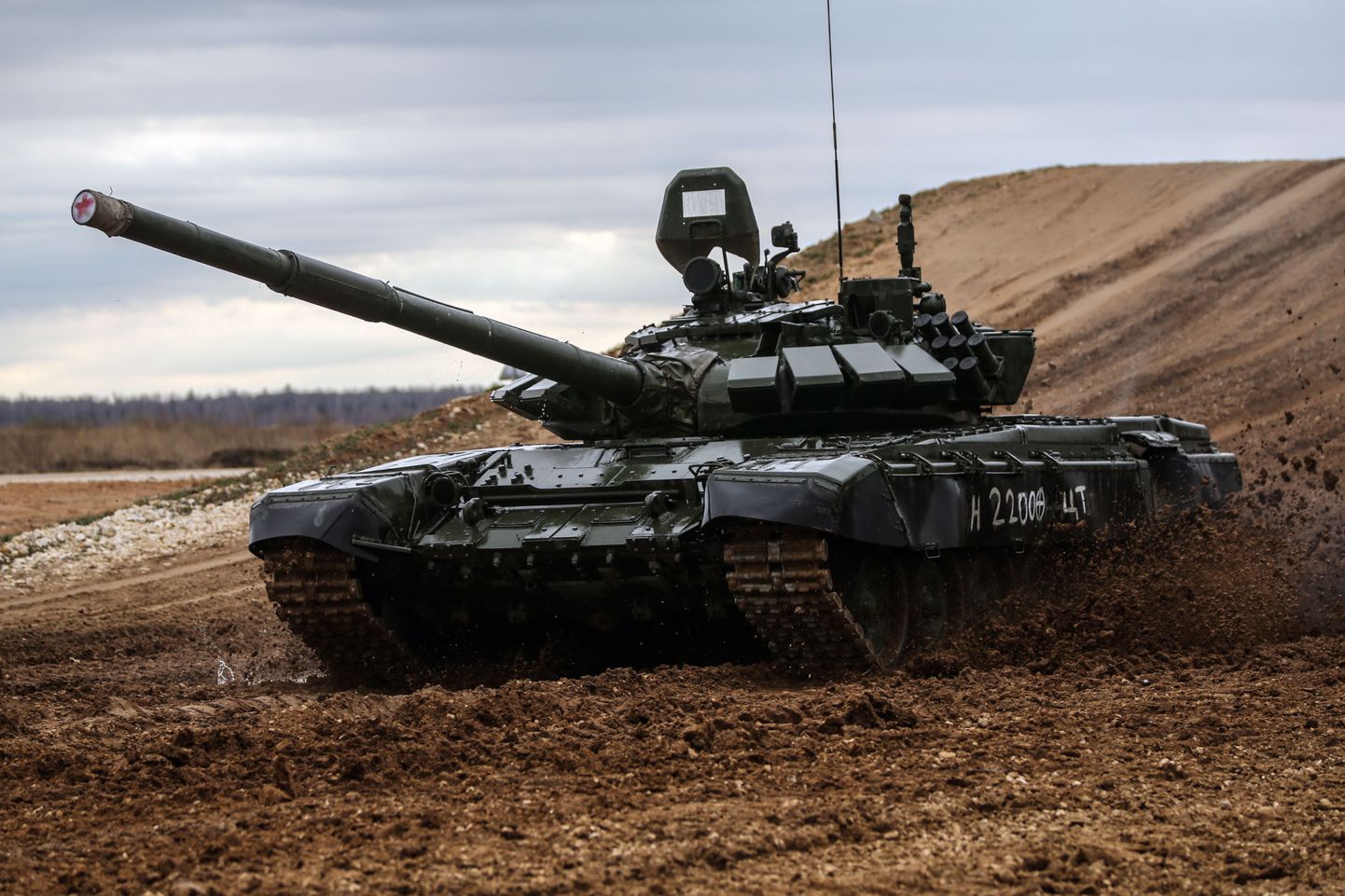
The 76th Guards Air Assault Division in Pskov, Russia and immediate vicinity of Estonia gets boosted by a tank unit. Experts say security of Estonia is thereby under no greater threat.

The 76th Guards Air Assault Division in Pskov, Russia and immediate vicinity of Estonia gets boosted by a tank unit. Experts say security of Estonia is thereby under no greater threat.
The creation of tank companies of 10–12 tanks with six air assault divisions and brigades, including Pskov, was discussed this past Friday at Russian defence ministry as part of a plan to strengthen capability of air assault units of Russian army. The tanks will be the latest version of T-72.
Commander of Russian air assault troops and a most successful Russian military leaders in both Chechnya wars Colonel General Vladimir Shamanov said the air assault units will also be strengthened with drones and radio electronic combat units.
«This is necessary in hybrid warfare conditions,» wrote military expert at Nezavissimaya Gazeta, retired colonel Vladimir Mukhin.
Currently, Russian air assault units have no tanks, just armoured vehicles. If needed, like in the Chechnya wars, the air assault units have been strengthened with tank units of other military units. «The formation of these (tank companies) speaks about enhanced power provided to air assault i.e. mobile units,» wrote Mr Mukhin.
«Probably they are discussing the option that, early on, tanks and other heavy equipment will be located in military bases close to potential conflict zones as has been done by the Americans in the Baltics.»
Estonian Defence Forces deputy commander Brigadier General Artur Tiganik told Postimees that the tank company added to the Pskov division will not alter the big picture for Estonia’s security. «Because they have enough of tanks and tank units behind Estonian border anyway,» he said.
Brig. Gen Tiganik said the only logical explanation would be that the Russian army is altering the air assault divisions concept as «tanks cannot be dropped by parachutes, as tanks are too heavy».
«For a long time they have used tanks as added strength to air assault units in conflicts, like in Chechnya,» said Tiganik. «Now, probably, already in the time of peace they want to boost these like this, to simplify training. If needed, they want to use air assault troops as infantry.»
He went on to say that Russian army units are able to relocate relatively fast with considerable forces. «Their readiness has improved, they have become more professional, there is lots of new armament. Intensive training is going on constantly, and battle check,» assessed Tiganik. «This is what we need to follow and analyse.»
Ret. Colonel Vladimir Mukhin told Postimees that six tank companies for all the air assault troops is actually very little and even if these would converge around the Baltics, they would still be no significant force.
«This is little in the sense of an attack, but is insufficient to hit back against a potential aggressor as NATO and Estonia look like at the moment,» said Mukhin.
Mukhin thinks Russian air assault units actually need no tank units. «In Estonia, a rather large part of the population is loyal to Russia, wherefore if the issue arises of the ancient Russian lands being returned to Russia, it takes no tanks. Sufficient is the human factor and «polite people»,» claimed Mukhin.
«But these need not be feared. You in NATO have already been occupied by another force – the Islamists –, but this is still little felt in Estonia.»
Estonian National Defence College strategy lecturer Viljar Veebel says Russian news of formation of new units and equipping these with modern armament is part of information war.
«These news do not count for much at all, but may cause confusion among the opponent,» said Veebel.
«Such news are being produced systematically and for the most part the true facts are skilfully combined with exaggerations. Looking at current Russian capacity to fulfil planned arms procurements and formations, the probable achievable result is 50–60 percent of the plans advertised.»
Veebel said real threat to Estonia by Russia, in near future, would rather be in modernised means for hybrid warfare, as well as development of devices of electronically intelligence and interference near Estonian border.
«Currently, it is vital firstly to strengthen security with hybrid warfare and broader security in view, as such pressure will logically precede direct military conflict,» said Veebel.